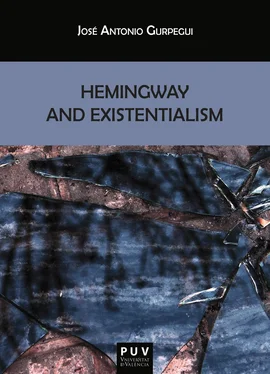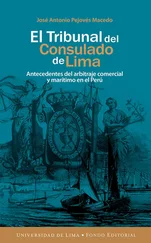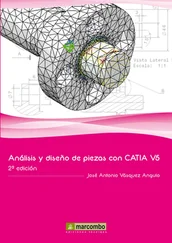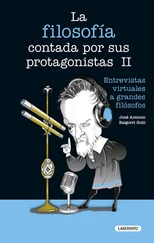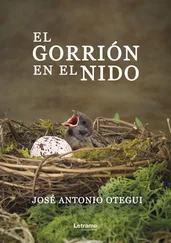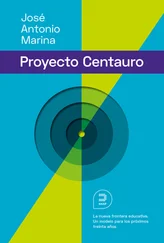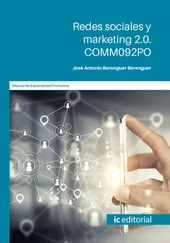The literary atmosphere he lived while in Paris during the twenties was singular and the French capital was the literary capital of the world. Two most outstanding artistic figures James Joyce, who published his Ulysses in 1922, and Ezra Pound, who had been writing his Cantos since 1915, were living there. The references mentioning the admiration that young Hemingway felt for those two writers are numerous, as in the earlier correspondence with Anderson, where the name of Joyce is mentioned repeatedly. Not in vain was Hemingway one of the first to reserve the extremely expensive first edition of the Ulysses , although he could barely afford such expense. 4 He read it quickly and on March 9, 1922, a month and a week after the Ulysses was published, he would write to Anderson, “Joyce has a most goddam wonderful book” (in Ellman 543). Hemingway also signed a letter opposing the “tampered” North American edition of the Ulysses published by Samuel Roth and even promised to bring Joyce a live lion from his African safari (“Fortunately we escaped that,” stated Joyce, in Ellman, 708). His relationship with Pound, him being a fellow countryman, was much more intimate. Hemingway would teach him boxing and Pound would tutor him in the noble arts of writing. Jeffrey Meyers brilliantly harmonizes the relationship between the two writers,
Both Pound and Hemingway were passionately devoted to their art and soon established a dynamic creative sympathy. They liked each other personally, shared the same aesthetic aims and admired each other’s work. Pound was an unofficial minister of culture who acted as midwife for new literary talent. Hemingway, who at this time of his life was most responsive to constructive criticism, was intensely interested in technique: of poetry and prose as well as of boxing and bullfighting. He came to Pound as a pupil and allowed the poet to assume his favourite role as teacher. Pound, the first significant writer to recognize Hemingway’s talent, did everything possible to help him achieve success. (73)
“Make It New,” the “maestro” had foretold, and that was the outmost which Hemingway would assume as his dogma for faith. This was “his time,” the time of the literary revolution; a time where the old school was useless. The horrors of World War I had destroyed the optimism of harmonized humanity in which an individual could develop all of his potentials—”Everybody’s sick. I’m sick, too” (16), Georgette states at the beginning of The Sun Also Rises ; Cohn had manifested such an opinion before, “‘I’m sick of Paris…’” (12). The traditional values seemed, pragmatically speaking, as obsolete as outdated. It was a new era, different from the one before and this was the reason why the models of expression also had to be different. This was Joyce’s and Pound’s aspiration; also Kafka’s or Tristan Tzara’s—with whom he published in the same edition of the “transatlantic review”—and of many others. As in every aspect of his life, also creatively, Hemingway followed the extreme. To create something new, you had to “kill the father,” and his artistic father at the time was Sherwood Anderson.
Frequently, especially among writers, the physical distance entails a spiritual, conceptual or philosophical distancing with respect to the prevailing values of the place of origin. The title in our time expressed the wish to break away, but the ties with Winesburg, Ohio , even though the first is a book of short stories and the second a novel, are unquestionable. Each and every one of the twenty one short stories in Winesburg, Ohio , has its own meaning in an isolated way, just like the Nick Adams stories in in our time can be understood as part of the set, for they all complement each other in such a way that Nick is progressively shaped as a novelistic character. Both cases deal with young protagonists who live in a rural environment and are moving towards maturity. Thus, we find two peculiar “bildungsroman” whose initiation towards adult life follows, in certain cases, similar guidelines.
This is the nexus, but in the stories of in our times it is possible to clearly see the spiritual distancing mentioned before. Nick Adams is an infinitely more individualistic character than George Willard, and his process of “self discovery” is structured around his rebellion against his parents, especially against his father. Stories such as “Now I Lay Me,” “Indian Camp” or “The Doctor and the Doctor’s Wife” are clear and definite examples of what has been exposed. Although the rebelliousness against the father could be understood as a natural generation conflict, it clearly stresses the rejection of the traditional values that the parent embodies. Nick rebels against western civilization inherent values and points the way towards fundamental proposals in later protagonists, especially the individual’s individuality and singularity to whom the social code of values seems obsolete, outdated, and old fashioned. Hemingway’s heroes, as can be appreciated in the early Nick Adams, advocate or understand their existence from exclusively individual premises, always taking into account that it is their individual and non transferable experience which will finally make their perception about existence. The final result will be the acceptance of a personal moral system that is not necessarily similar to that which is socially accepted, ethics.
This wish to break away, which can be noticed more or less in a hidden way in in our time , can definitely be seen in The Torrents of Spring . Let us remember the subtitle of the novel, “A Romantic Novel in Honour of the Passing of a Great Race.” With respect to the meaning, from its content we can infer that the “great race” refers to the Indians mentioned in the novel. Nevertheless, the meaning of the novel, i.e. a criticism of Anderson, could very well have a new interpretation: could the allusion to the “great race” be understood as an allusion to those writers who preceded him or perhaps to Anderson’s Indians? These questions could be understood as a simple hypothesis, but taking into account the famous “iceberg theory” we can agree that it may contribute to substantial interpretations. From this point of view, D.H. Lawrence’s signed photographs, and even the oleo portrait of Henry Wadsworth Longfellow that can be found in the conference room, the Indians’ “wigman” in the novel, can be included in the list of authors aforementioned.
Throughout the reading we find Henry James, of which Scripps thought of as “quite a writer” (53), although the narrator describes him as “that chap who had gone away from his own land” (52); Shakespeare, from whom he takes the name of Puck for his bird; Ford Madox Ford, a chatty person who tells good anecdotes, of which he is thankful for; Sinclair Lewis, with whom he talks to about literature; Both Tarkington, another “fellow” who “had the wrong dope” (69); John Dos Passos, “whom I consider a very forceful writer, and an exceedingly pleasant fellow besides” (69); Willa Cather (187), H.G. Wells (197), E.E. Cummings (in capital letters), Scott Fitzgerald, Anderson… as we can see, the literary references are constant, categorically more numerous, and there is more authenticity than in prior works.
In The Torrents of Spring , Hemingway shows an undeniable desire for innovation and experimentalism. The desperate search for artistic independence makes him reevaluate the narrative models known to him. Using Carlos Baker’s words, it is about “a declaration of aesthetic independence” (77). The novel itself is not understood as a work of art, but instead, it establishes an explicit dialogue with the reader who is always present as the final recipient of the work. Aside from comments and explanations pertinent to its contents, he introduces a series of reasoning which could be mortifying if not placed within an experimentalist and satirical scope. Thus, for example, he remarks through Dos Passos, “Hemingway, you have brought a masterpiece” (84). In others, it is Hemingway himself who evaluates his own work, “As I read that chapter over, reader, it doesn’t seem so bad” (93). The real artistic-ideological message is found in the quotes taken from Henry Fielding, who introduces each of the four chapters. “The only source of true ridiculous (as it appears to me) is affectation” (16) is the first quote that we read. Others, “And here I solemnly protest I have no intention to vilify or asperse anyone” (40); or, “It maybe likewise noted that affectation does not imply an absolute negation of those qualities which are affected” (66); and the final one, “But perhaps it may be objected to me, that I have against my own rules introduced vices, and of a very black kind” (88). The irony is so evident that it cannot be missed; nevertheless, he will present identical narrative principles, this time formally, in Death in the Afternoon , “a serious writer is not to be confounded with a solemn writer. A serious writer may be a hawk or a buzzard or even a popinjay, but a solemn writer is always a bloody owl” (192).
Читать дальше
